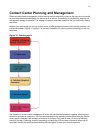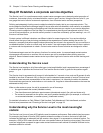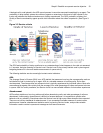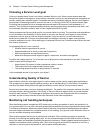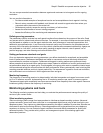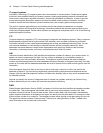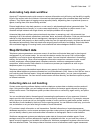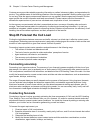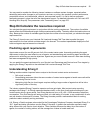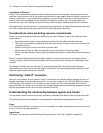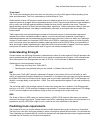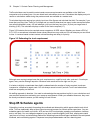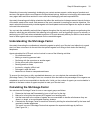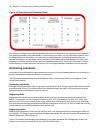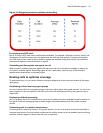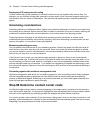Step #4 Calculate the resources required 29
You may need to consider the following issues: hardware or software system changes, expected callers,
advertising and media, changes to your products, services, or pricing, new products, product performance,
competitors actions, and international, national, and corporate events. It is vital to have a systematic
forecasting process in place that all of the departments support. For detailed information on Call Load, ACD
Handling time, Wrap Up Time parameters, see “Forecasting terms” on page 275.
Step #4 Calculate the resources required
You calculate the agent requirement in conjunction with the trunking requirement. The number of available
agents affects the likelihood and length of delay experienced by callers. The delay affects the load trunks must
carry. Because the number of available agents impacts the number of trunks required, you calculate the agent
requirement first.
The Erlang C formula uses your historical Call Load and Average Talk Time data to predict the agent
requirement for the time interval and date range in the forecast. The resultant spreadsheet displays the Call
Load and agents required across time intervals.
Predicting agent requirements
Agent costs account for over 60 percent of all of the contact center costs. Accurately predicting the agent
requirement, making the most effective use of agents, and standardizing and monitoring agent activities are
paramount to achieving your service objectives. Agents are your most valuable resource: make team building
and team management a high priority.
You can predict the agent requirement for your Service Level Percentage and Service Level Time targets by
applying the Erlang C equation to the estimated Call Load and Average Talk Time.
Understanding Erlang C
Staffing models consider important factors unique to the inbound contact center environment:
• Call arrival is random.
• Consolidating resources allows the same number of contact center agents to handle more calls while
maintaining Service Levels.
• Maintaining high Service Level targets requires staffing a large number of agents that will be idle a
significant portion of the day.
The industry standard Erlang C equation operates on these principals. Most contact center reporting
packages use Erlang C. An Erlang measures telephone traffic, or the flow of calls and call attempts to your
contact center during a given period. One Erlang equals one hour or 60 x 60 = 3,600 seconds of telephone
conversation. This could be one call lasting one hour, six calls lasting 10 minutes, or any combination of calls
and call durations that equal 60 minutes. The Erlang formulas provide a mathematical basis for making
predictions about randomly arriving workloads.
A.K. Erlang, a Danish engineer who worked for the Copenhagen Telephone Company, developed Erlang C in
1917. Agent and delay calculations use the Erlang C equation. It predicts the resources required to keep
delay times within your Service Level objective. Three variables influence the delay time: the number of
agents, the number of waiting callers, and the average time it takes to handle each call.



